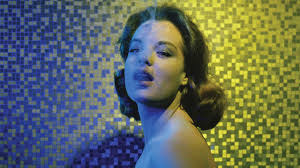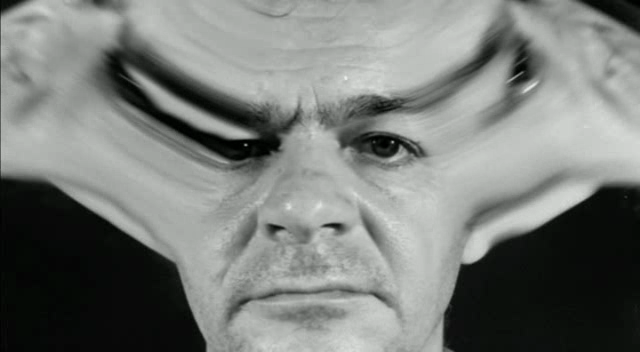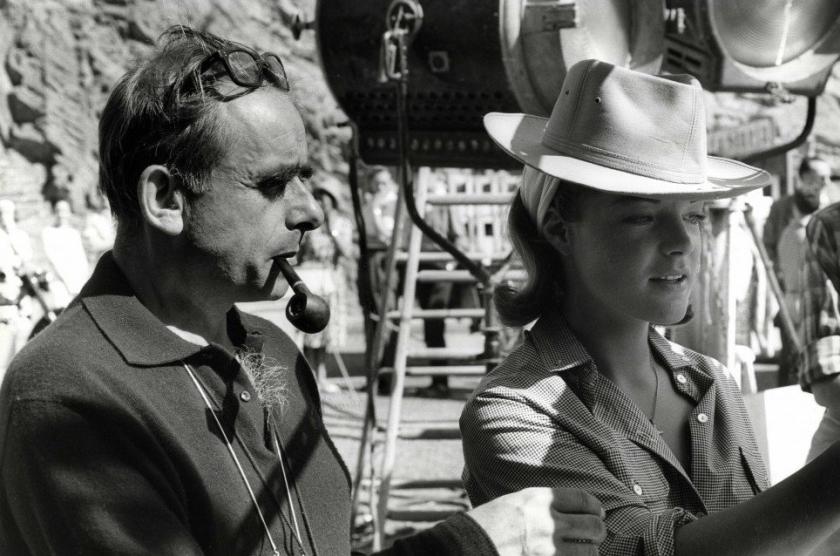Watching what remains of Henri-Georges Clouzot’s Inferno (L’Enfer) serves to remind us just how good his earlier work was. Inferno marked the beginning of the end, its shambolic production beginning Clouzot’s descent into obscurity. But Serge Bromberg and Ruxandra Medrea’s documentary is a treat, the film’s tragicomic history interspersed with archive footage and new dramatisations of key scenes.
The hugely anticipated Inferno was started in 1964, four years after Clouzot’s previous film, the Brigitte Bardo-starrer La vérité, which had been a huge box-office success. What was potentially an intimate thriller about a jealous husband and his younger wife became a casualty of directorial hubris. Columbia Pictures recklessly gave Clouzot an unlimited budget, allowing him to hire three crews and 150 technical staff. Meticulously detailed storyboards were drawn up, with colour-coded notes signalling levels of characters’ emotional stress. Weeks were spent creating eye-popping test footage intended to suggest the husband’s mental collapse.
 These sequences make the documentary mandatory viewing, a parade of unhinged psychedelic visuals which enthral as much as they bewilder. We get backwards shots of a luminous Romy Schneider (pictured right) exhaling smoke, and extraordinary footage of her and co-star Serge Reggiani illuminated with rotating lights, their faces seemingly melting and reassembling. Schneider even gets to explore the erotic potential of a Slinky. Leading avant-garde composers assisted with the sound design, and Clouzot’s immaculate graphic notation is a joy to behold.
These sequences make the documentary mandatory viewing, a parade of unhinged psychedelic visuals which enthral as much as they bewilder. We get backwards shots of a luminous Romy Schneider (pictured right) exhaling smoke, and extraordinary footage of her and co-star Serge Reggiani illuminated with rotating lights, their faces seemingly melting and reassembling. Schneider even gets to explore the erotic potential of a Slinky. Leading avant-garde composers assisted with the sound design, and Clouzot’s immaculate graphic notation is a joy to behold.
Exterior scenes on a lake would have had their colours reversed, turning the water blood-red – meaning that the actors had to wear blue make-up and lipstick. You sense that the famously well-organised Clouzot was out of his depth. One collaborator recalls the director seeming “a bit Hollywood”, lamenting that “he used to be so efficient.” It’s a miracle that the collapse didn’t come sooner: poor Reggiani (pictured, distorted, below left), presumably exhausted after being made to run for miles each day in blazing heat, exited after a few weeks, allegedly suffering from "Maltese fever". Clouzot vainly tried to secure a replacement, shooting endless retakes in the knowledge that the lake was about to be drained for a hydroelectric scheme. The final blow came when he was hospitalised with a severe heart attack.
 The rushes were seized by the insurers, passing to the French National Archives in the 1970s. Clouzot’s career never recovered; a series of documentaries made with conductor Herbert von Karajan and 1968’s La prisonnière were all he produced before his death in 1977. It’s a sorry tale, but Inferno’s fate feels somehow right. What’s described as “the sort of film that could have been shot in eight weeks” would more likely have been a heroic flop, Clouzot’s colourful experimental material at odds with his earthy subject matter.
The rushes were seized by the insurers, passing to the French National Archives in the 1970s. Clouzot’s career never recovered; a series of documentaries made with conductor Herbert von Karajan and 1968’s La prisonnière were all he produced before his death in 1977. It’s a sorry tale, but Inferno’s fate feels somehow right. What’s described as “the sort of film that could have been shot in eight weeks” would more likely have been a heroic flop, Clouzot’s colourful experimental material at odds with his earthy subject matter.
Generous extras include a talk by Clouzot expert Lucy Mazdon and They Saw Inferno, a documentary containing useful interviews with crew members. The introduction and extended interview with the infectiously upbeat Bromberg are both fun, especially when he explains exactly how he was able to gain access to the 185 cans of surviving footage.














Add comment